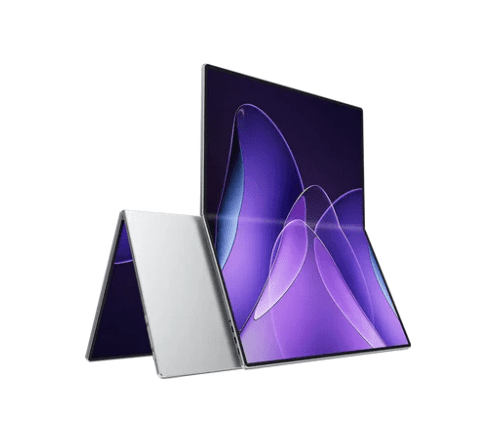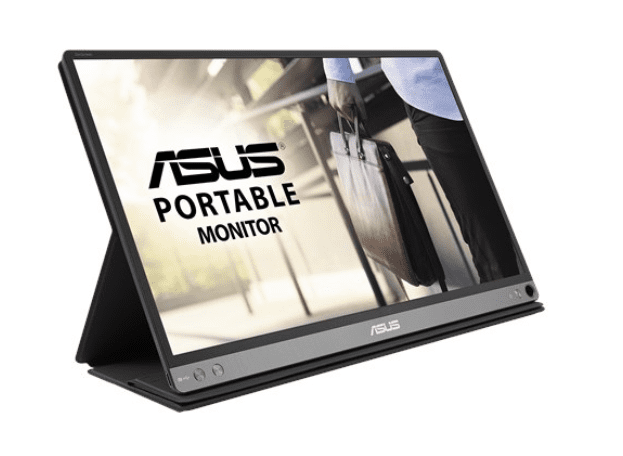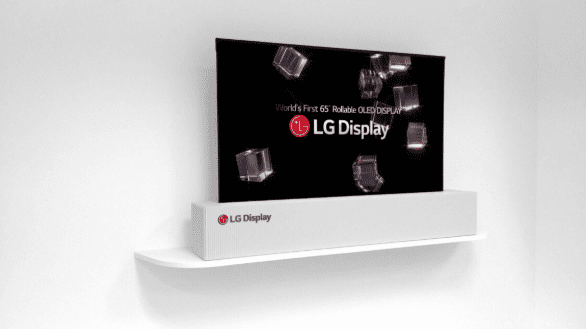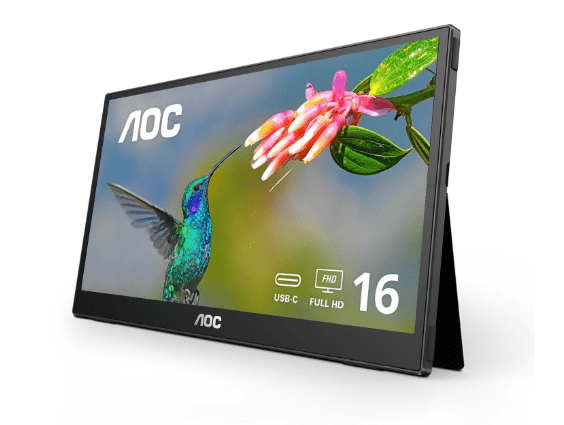Displays have gone from large, boxy CRTs to slim, portable laptops to 5G screens in smartphones. Innovation and miniaturization have continued to drive this development, shrinking screens while making them more powerful and user-friendly.
Another trend gaining momentum is displays that break the rigidity of flat glass. Flexible or rollable monitors can stretch, bend, and even roll up. Traditional portable monitors, by contrast, have been a go-to solution for laptop users, gamers, and digital nomads in need of extra screen estate for years. But how do they compare to this new wave of flexible or rollable screens?
In this article, we will go over some basic differences between flexible monitors and traditional portable monitors, consider their pros and cons, and review some actual products from popular brands like UPERFECT.
The Basics: What Are Flexible Monitors?
Flexible or bendable monitors, or flexible displays as they are sometimes called, are exactly what they sound like. They are displays that can flex, bend, or even be rolled like a poster.
Flexible monitors are not LCD panels on glass; they use more advanced OLED or plastic substrates that allow for flexibility while maintaining crisp display quality.
The selling point is convenience. Flexible monitors allow users to adapt the display to their immediate needs. For instance, you could roll a 22-inch 4K display like a poster to take with you, or bend the monitor around your setup to achieve a panoramic view. These are the basic concepts behind flexible monitors.
Traditional Portable Monitors: A Traditional Companion
Traditional portable monitor for laptop devices, on the other hand, are the older, established breed of portable displays. Portable monitors are flat, thin, and easy to carry, but that’s where the similarities with flexible monitor end.
Portable displays don’t bend or roll. Their point is to be taken wherever you want to work or play on the go. All you have to do is connect to a laptop, gaming console, or even your smartphone to instantly benefit from more screen estate.
Traditional portable monitors are as practical as portable displays can get. They are used by people of all walks of life who simply want something that works.
Key Differences Between Flexible Monitors and Portable Monitors
- Portability
Flexible Monitors: The main benefit of flexible or rollable monitors is an even more portable solution. You can roll up your display into a compact tube rather than carry a rigid rectangle.
Traditional Portable Monitors: Traditional portable monitors already are portable. Some weigh less than 2 lbs and are smaller than many full-sized laptops.
- Durability
Flexible Monitors: They are likely to resist cracks and damage as they use flexible and durable materials. On the other hand, a bendable monitor might be more prone to long-term damage and scratches.
Traditional Portable Monitors: Portable monitors are made with a rigid frame and tempered glass that can handle the rigors of daily travel. A single drop can kill a traditional portable monitor, though.
- Performance
Flexible Monitors: Flexible displays often use OLED panels, which are lighter and brighter, and provide better contrast and blacks. A flexible monitor is also likely to have lower refresh rates or resolution than a traditional portable monitor.
Traditional Portable Monitors: Portable monitors are well established and offer everything from Full HD to 2K and 4K screens. Many support high refresh rates up to 144Hz, making them more ideal for gaming.
- Price
Flexible Monitors: They are new technology and usually more expensive. The design and materials make them more costly to produce.
Traditional Portable Monitors: Portable displays are much more budget-friendly, with a larger range of entry-level to premium models.
- User Experience
Flexible Monitors: Flexibility is the primary point of flexible monitors. Users can make these devices work for different setups. For instance, you can use a flexible monitor flat, curved, or rolled up.
Traditional Portable Monitors: Traditional portable displays offer a no-nonsense, reliable experience. Plug and play without a steep learning curve.
Brand Comparisons
Let’s compare some specific examples from the industry leaders in this space.

UPERFECT Omega Flexible Display 22-Inch
UPERFECT is one of the few brands trying to bring flexible monitors to the market in a ready-to-buy product form. Their Omega flexible monitor Display is a 22-inch display unit that can be used flat, curved, or even rolled up like a poster.
Display: Large, 22-inch screen that can be used on flat or rolled for various uses.
Portability: Because of flexible technology, this display is portable and can be rolled up for transport.
Use Cases: Great for presenters and users who travel a lot. On-the-go presentations, gaming, or digital art editing.

ASUS ZenScreen Portable Monitors
ASUS has been making portable displays for many years now, and the ZenScreen series is the brand’s flagship portable monitor product. These are traditional portable monitors in all senses of the word.
Design: Ultra-slim and lightweight portable monitor that is easy to carry with you.
Display Options: Available in different sizes, from 15.6 to 17 inches. Display tech includes Full HD or OLED with touch capabilities.
Strengths: Ease of use, plug and play, affordability, and availability.

LG Rollable OLED Concept
LG has not brought rollable OLED screens to the market for regular consumers, but it has shown some promising prototypes over the last few years.
Technology: Ultra-advanced OLED technology that can be rolled into a tight cylinder.
Target Use: Intended for premium, high-end uses like mobile entertainment or tech-forward work and travel.
Limitations: Expensive, consumer-ready models are limited or unavailable.
LG has been pioneering OLED and rollable display technology for many years, with some great concepts recently, although none are ready for the consumer market.

AOC Portable Monitors
AOC has a dedicated line of portable monitors, and the brand’s 16-inch displays are some of the thinnest and most affordable on the market.
Display: IPS Full HD display with very good brightness and color reproduction.
Focus: Price-performance ratio, casual uses.
Why Choose AOC: Affordable entry point for newbies.
Lenovo ThinkVision Portable Monitors
Lenovo has its ThinkVision lineup of portable monitors, with the ThinkVision M14 being one of the lightest and easiest to carry.
Weight: The lightest portable monitor currently available, under 1.3 lbs.
Performance: Crisp, sharp visuals with USB-C support for easy, no-nonsense plug and play.
Who It’s For: Business travelers and remote workers.
Which One Should You Choose?
If you’re still not sure about whether to buy a flexible monitor or a traditional portable monitor for your setup, here are some quick tips.
Choose Flexible Monitors If:
- You are into cutting-edge technology.
- Travel a lot and could make use of rolling your screen into a compact shape for transport.
- You are a fan of unique, futuristic devices that can be used in different configurations and setups.
Choose Portable Monitors If:
- You are looking for something that is affordable and works right out of the box.
- You use your monitors for office work, casual streaming, or some light gaming.
- You like things to be straightforward. Plug in, and go to work.
The Future of Displays
The new age of flexible monitors doesn’t mean traditional portable monitors will go away. In fact, both flexible and traditional portable monitors will continue to coexist for years to come.
Traditional portable monitors will continue to be the default for a majority of users due to price and familiarity. Flexible or rollable displays, by contrast, will carve out a niche for themselves among enthusiasts, creatives, and professional users who need the latest tech.
The rollable display technology will, of course, become much more common as production ramps up and prices come down. It is not a stretch to imagine a world where rolling up a 27-inch portable monitor in the morning and carrying it like a poster in your backpack is as commonplace as carrying a laptop.
Final Thoughts
When it comes to the flexible monitor vs. traditional portable monitor for laptop debate, there really is no right or wrong answer. It all depends on what you are using your screens for and what your priorities are.
Traditional portable monitors are a tried-and-tested solution that will work for the majority of users who want something practical and reasonably priced. Flexible monitors, as demonstrated by UPERFECT and a few others, are a whole new direction that push the envelope and offer something truly futuristic.
Do you need a mobile monitor for working on the road, gaming marathons, or content creation? The choice is yours: budget and reliability or innovation and flexibility.
The only thing certain is that, one way or another, modern technology has given users unprecedented freedom from the desktop. The future is not just portable. It’s flexible, too.






